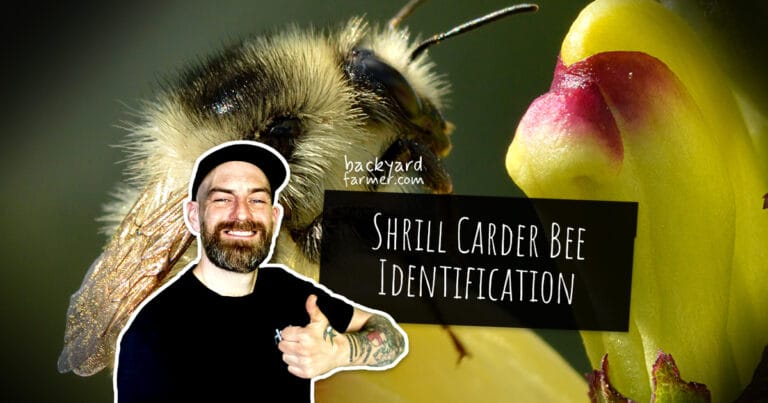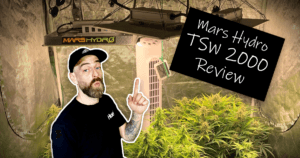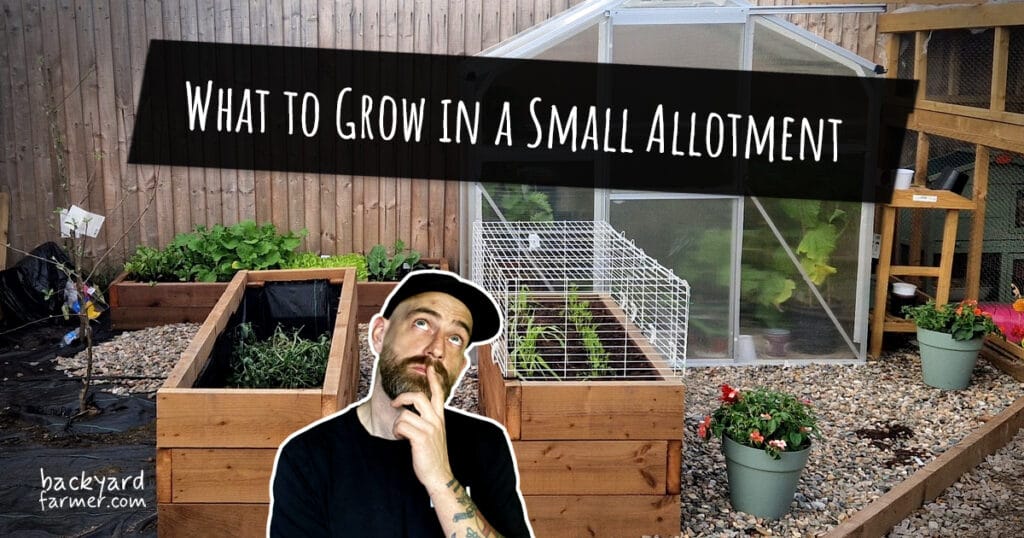Table of contents
Introduction
The Shrill Carder Bee is one of the rarest bumblebees in the UK. It’s easily recognised by its high-pitched buzz and peach-orange tail. Most sightings occur in Southern England and South Wales, where these bees thrive in flower-rich meadows, coastal grasslands, and marshes.
Although once widespread, this species now survives in only a handful of isolated spots. As a result, it has become a key focus of conservation efforts and ecological research.
👉 Want help telling different bee species apart? Check out our complete Bee Identification Guide.
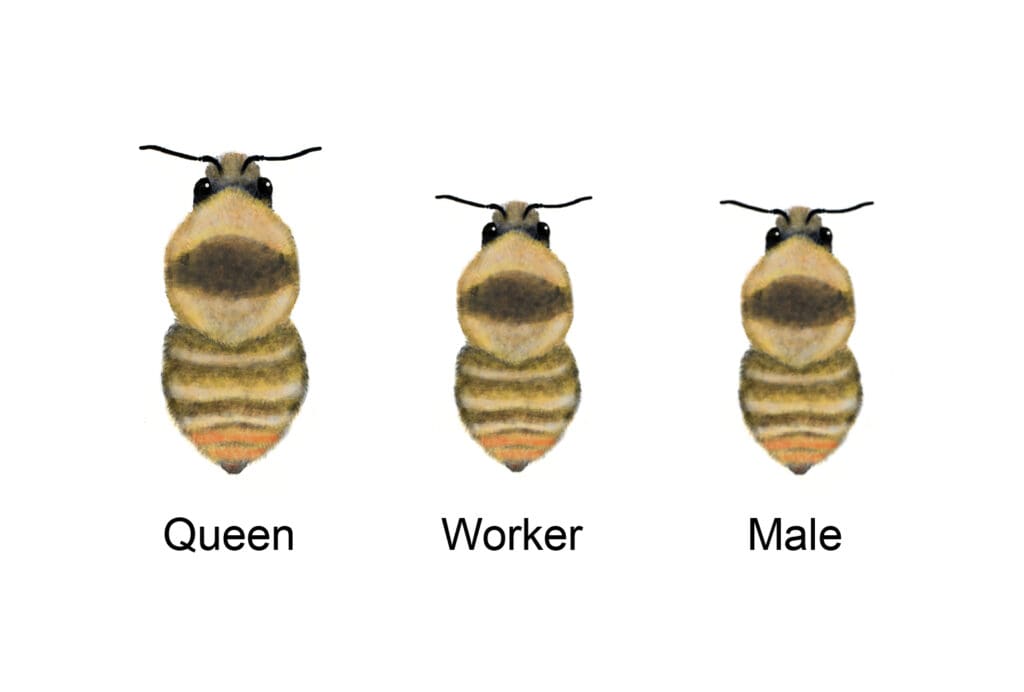
How to Identify the Shrill Carder Bee
To spot a Shrill Carder Bee, look for these key features:
- Pale yellow hairs covering the body
- Two black or grey bands across the thorax and abdomen
- A distinct peach-coloured tail
- A shrill buzzing sound that gives the bee its name
- A smaller, slimmer build than other bumblebee species
You’ll most likely see them between May and September, especially during summer when they forage among legume-rich wildflowers.
Identification & Key Facts
| Attribute | Details |
|---|---|
| Common Name | Shrill Carder Bee |
| Latin Name | Bombus sylvarum |
| Size | Queens: ~16mm; Workers & Males: ~11–13mm |
| Location | Southern UK: Somerset, Thames Estuary, Gwent Levels |
| Active Months | May to September |
| Habitat | Flower-rich meadows, marshlands, coastal grasslands |
| Nesting Behaviour | Ground-level nests in tussocks, grassy banks, or under vegetation |
| Diet | Red clover, birds-foot trefoil, vetches, knapweed, and other legumes |
| UK Status | Rare & declining – subject of conservation and recovery projects |
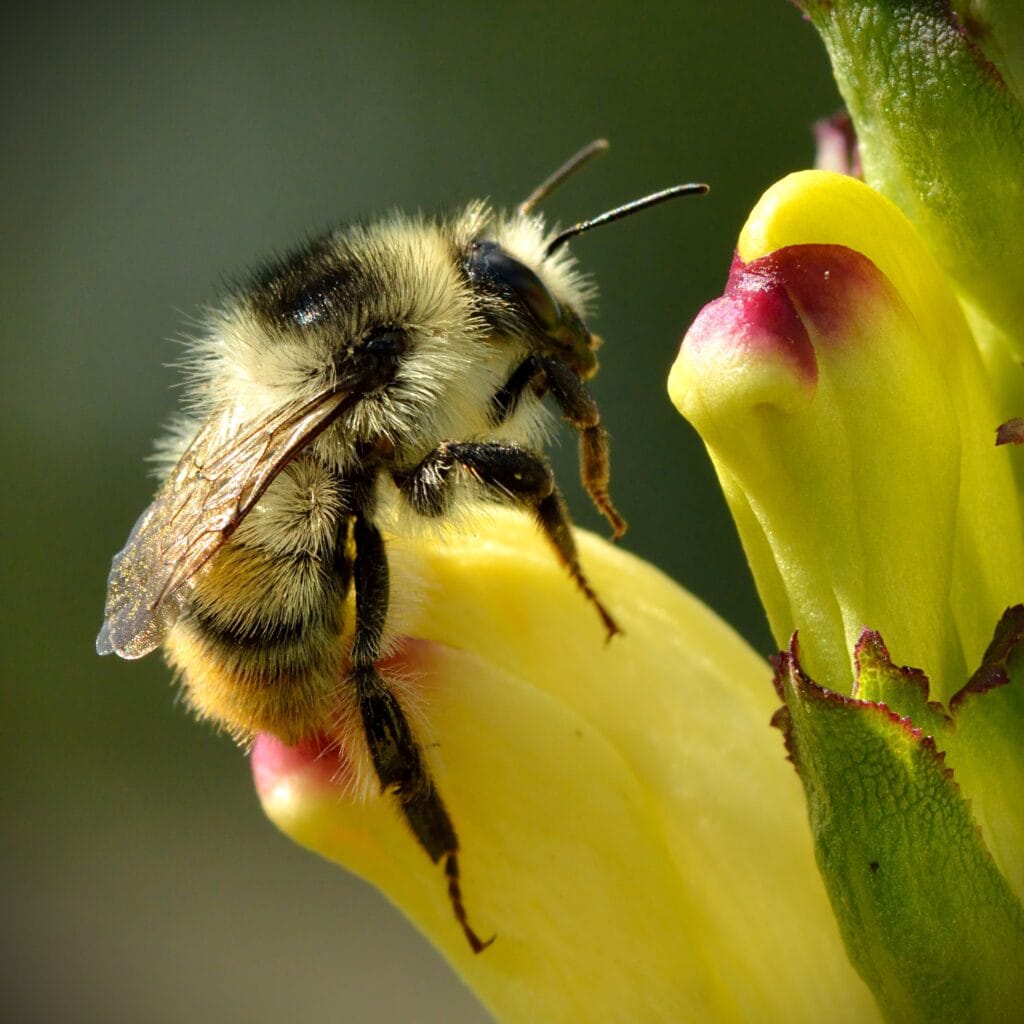
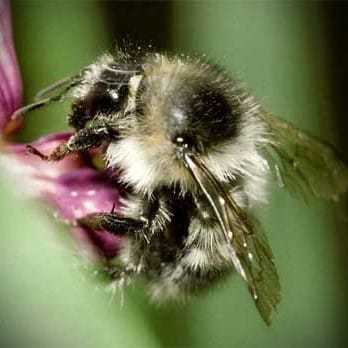

Similar Species
You might confuse the Shrill Carder Bee with:
- Common Carder Bee (Bombus pascuorum) – more uniformly ginger and fluffier
- Moss Carder Bee (Bombus muscorum) – also gingery but lacks the peach tail and grey bands
Tip: Listen for the high-pitched buzz and look for that pale yellow body with a peachy tail!
Why the Shrill Carder Bee Matters
Shrill Carder Bees are more than just a rare sight—they’re vital pollinators, especially for native legume species. These flowers improve soil health by fixing nitrogen and support a wider range of biodiversity.
Sadly, the Shrill Carder’s decline mirrors the broader threats facing many pollinators. Habitat loss, overgrazing, and intensive agriculture are key contributors. That’s why it’s listed as a priority species in the UK Biodiversity Action Plan.
How You Can Help
Steps You Can Take:
Grow Wildflowers
Plant red clover, birds-foot trefoil, vetch, knapweed, and other native legumes to boost local food sources.
Avoid Chemicals
Choose organic or natural pest control to keep pollinators safe.
Protect Nest Sites
Leave patches of long grass and grassy tussocks undisturbed in your garden or local green space.
Support Conservation
Get involved with groups like Buglife or the Bumblebee Conservation Trust. Whether you donate, volunteer, or simply spread the word—it all helps!
Frequently Asked Questions
Where do Shrill Carder Bees live in the UK?
They’re mostly found in southern regions, including Somerset, the Thames Estuary, and the Gwent Levels. These areas offer the wildflower-rich habitats they rely on.
Why is the Shrill Carder Bee endangered?
Mainly due to habitat loss, overgrazing, and modern farming practices. Without diverse wildflowers and undisturbed nesting spots, these bees struggle to survive.
How can I attract Shrill Carder Bees to my garden?
Plant nectar-rich wildflowers like red clover and birds-foot trefoil, avoid chemical pesticides, and let some areas of your garden grow wild.
Check out our simple visual guide to British bumble bee identification.
